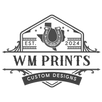3D printing, while groundbreaking, can sometimes be bogged down with inefficiencies. If you've found yourself waiting endlessly for prints, getting frustrated with multiple failed attempts, or just wanting to refine your process, you've come to the right place. Here, we will explore some strategies to help streamline your 3D printing workflow for maximum efficiency.
Before diving into these improvements, consider visiting WM Prints for a wide range of tools and resources that can aid in optimizing your 3D printing tasks.
Organize Your Workspace
One of the first steps to streamlining your 3D printing workflow is ensuring your workspace is organized. A cluttered workspace can lead to misplaced tools, increased setup time, and errors that could have been easily avoided. A tidy environment not only boosts creativity but also improves efficiency.
Must-Have Organizational Tools
Consider using specialized holders like the Lyman Type Prep Tools Holder to keep your essential tools within reach and neatly arranged. This holder offers a dedicated space for tools, ensuring that you are not fumbling around during crucial stages of the printing process.
Streamline the Design Process
A significant part of 3D printing efficiency is the design phase. Ensuring that your models are optimized for printing can save time and resources in the long run.
Design Tips
- Simplify Models: Avoid overly complex designs unless necessary, as they can increase processing time and the likelihood of print failures.
- Orientation Matters: Experiment with different orientations for your models to minimize the need for supports and improve print time.
Calibration and Maintenance
Regular calibration of your 3D printer is crucial in maintaining production quality and efficiency. A well-calibrated printer reduces the number of failed prints, saving both time and material.
Routine Checks
- Perform regular nozzle checks and cleaning.
- Calibrate your bed leveling before large print jobs.
Optimize Slicer Settings
The choice of slicing software and its settings can greatly impact efficiency. While experimenting with advanced settings might slightly extend the setup time, it often results in faster print times and less material use.
Slicer Settings to Consider
- Layer Height: Use the largest layer height your design tolerances allow for increased speed.
- Infill Pattern and Density: Determine the minimum effective infill densities for your models to reduce printing time.
- Speed Settings: Fine-tune print speeds for different parts of the model (outer shell, infill, etc.) for a balance between speed and quality.
By implementing these strategies, you'll notice a marked improvement in your 3D printing workflow efficiency. Remember, the key to enhancement is continual assessment and adjustment of your processes. To explore more tools and resources that can aid in this journey, visit WM Prints.
Happy printing!





